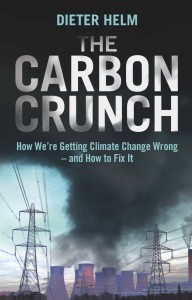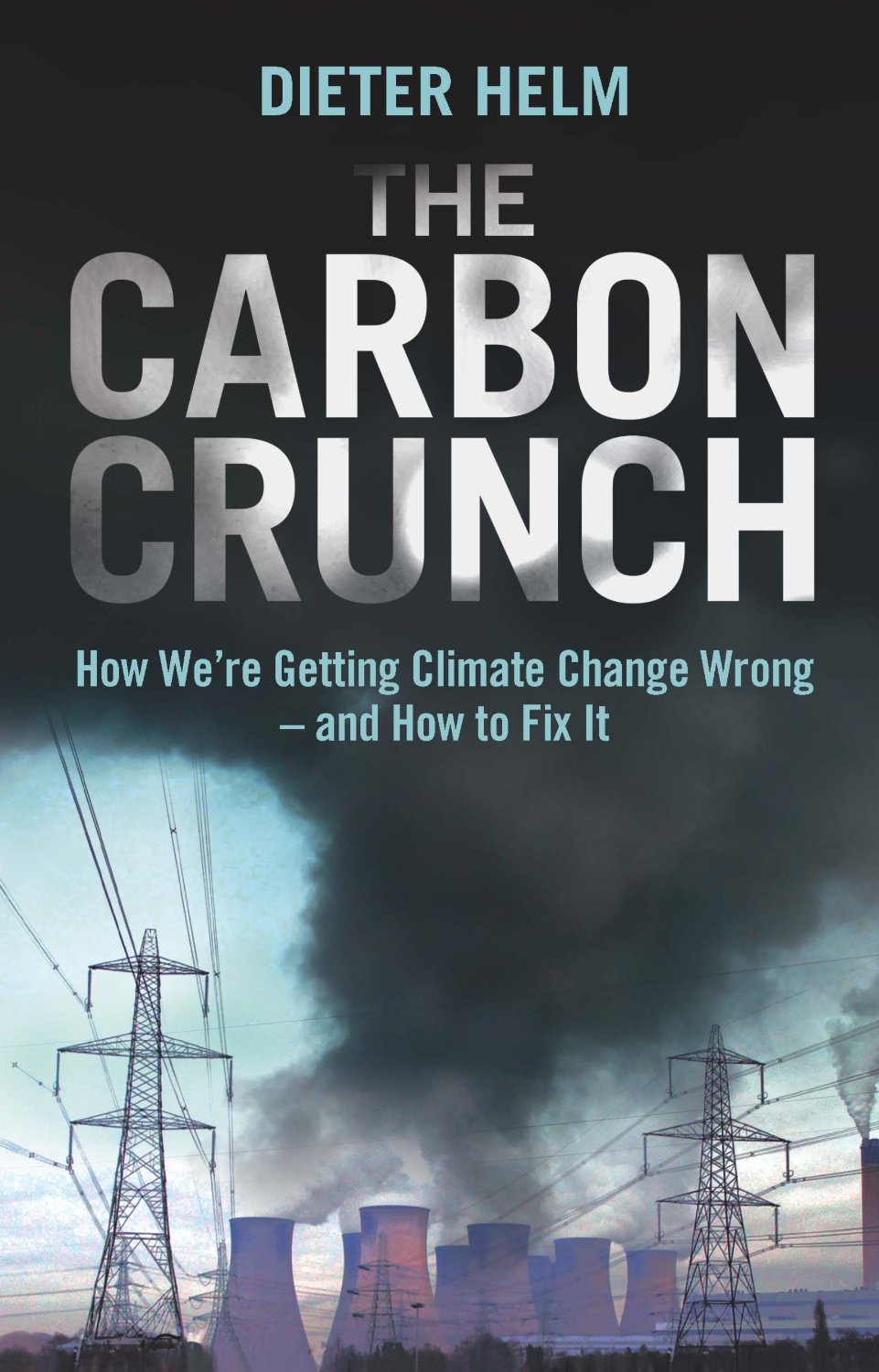
New York City Mayor Michael Bloomberg may be remembered as one of the few politicians to extend term limits in office, but pragmatism will be his ultimate legacy. If Mayor Bloomberg is the ideal pragmatist in politics then meet Dieter Helm, his counterpart in the climate change arena. Like Bloomberg who’s known to champion social causes and lean right of center on fiscal topics, Helm approaches climate change as leftist but offers solutions that veer from the de rigeuer of activists and environmentalists in the field. For Helm the path to a sustainable future does not look like a Danish utopia but rather one that utilizes natural gas as forerunner to a zero-carbon future.
In his latest book, “The Carbon Crunch”, Helm seeks to provide a simplified and all-encompassing guide to climate change answering three main questions – why there is a climate problem, why little progress has been made to address said problem, and what we should do to mitigate our future? His matter-of-fact presentation of arguments is refreshing, a skill that is sometimes lost in the political zeal of green parties and lobbyists who frame the solution to climate change as obvious and vilify contrarians. Helm maintains that the only way we will be able to successfully tackle climate change is to approach it globally by implementing a carbon tax, promoting coal-to-gas switching, and investing in R&D for nascent technologies and improvements on existing ones.
At first glance these solutions seem unconvincing – one is to rely on a carbon producing technology and the other is to throw money at research and hope for the best. Instead of jumping to these conclusions and making a case for them, Helm briefs the reader on main subjects of climate change, from renewables efficacy to the developing nation carbon dilemma. He reaches the penultimate conclusion that we can’t solve climate change with current technologies and the political environment of today. His solution offers immediate action to drastically reduce global carbon emissions – a solution he recognizes will have to be revisited as new knowledge and technologies emerge.
The cornerstone to Helm’s argument is that we have to drastically reduce coal use if we, as a world, want a standing chance at attaining zero-emissions. The fate of the carbon future lies in the coal-rich hands of India, China, and, to an extent, the US, where demand for new capacity is great and investments in technologies now will predict how we will approach climate change. He concludes that current renewables will not be able to replace existing generation in America or new generation in China, citing technical reasons, such as intermittency and reliability, and marginal costs. He claims current technology will not be able to meet this demand on a zero-carbon scale and supports gas as the transition fuel from coal towards a zero-carbon future. While his argument is thought provoking on how we view the role of renewables, there is an air of condescension – perhaps fueled by his obvious disdain for European green parties.
The three most compelling arguments Helm makes for gas are about costs, politics, and plausibility. The capital costs of a plant and its fuel are cheap. Low fuel costs are artificially low because of America’s shale revolution and inabilities to export, but he claims these prices aren’t expected to increase based off his counterpoint to peak theorists. Money spent on gas plants is money not spent on expensive renewables – the unused resources would be redirected towards R&D of future technologies that would be better solutions. Red tape for gas plants, which could displace coal plants, is relatively small compared to that of nuclear, the only other viable transition fuel option. Lastly, implementation and construction of gas plants can begin almost immediately to start offsetting coal. The plausibility argument probably holds the most weight but they are all valid reasons that make gas plant implementation a more viable option than other technologies. As for nuclear, implementation to meet our capacity needs would take dreadfully long in our bureaucratic system. Much of this is based on the premise that nuclear plants are accompanied by long and capital intensive endeavors that don’t show promise of reform. He acknowledges that there is a lower ceiling in China to push nuclear plant approval but insists that it would still not be a viable solution for new generation or displacement if seeking immediate action.
Lastly Helm addresses a carbon price, his most agreeable climate change solution. This price should be a tax and not a cap-and-trade system, citing failures in the European system that resulted in a volatile pricing structure. Along with the tax there should be a border tax to levy goods that don’t incorporate a carbon price. He explains that this will level the playing field, avoid free ridership of countries that don’t implement climate change initiatives, and force countries to implement carbon pricing or invest in low-carbon technologies to remain relevant in a carbon conscious world. This solution sounds workable in the global context. One thing the past decades have said about climate change is that international agreements are hard and not effective if everyone doesn’t partake. In a carbon price/border tax scenario, countries would implement their own standards regardless of what the rest of the world wants. Countries that want to remain relevant in US and European markets would be forced to comply or look elsewhere.
Ultimately “The Carbon Crunch” is a book to be read by those interested in the energy and climate change arenas. Helm takes on the task of logically explaining solutions in a subject area that is convoluted by vested interest groups on all sides of the argument. Whether Helm has a stake in the future of gas or not, he justifies that it’s the most practical approach to decreasing our carbon production in an international context. This book brings up the almost too obvious point – climate change is a global problem and we have to start implementing solutions on a global scale. Many just causes are championed with seemingly fit solutions but for some things it takes more than good intentions.
Matthew Turis
Mechanical Engineering ’14


